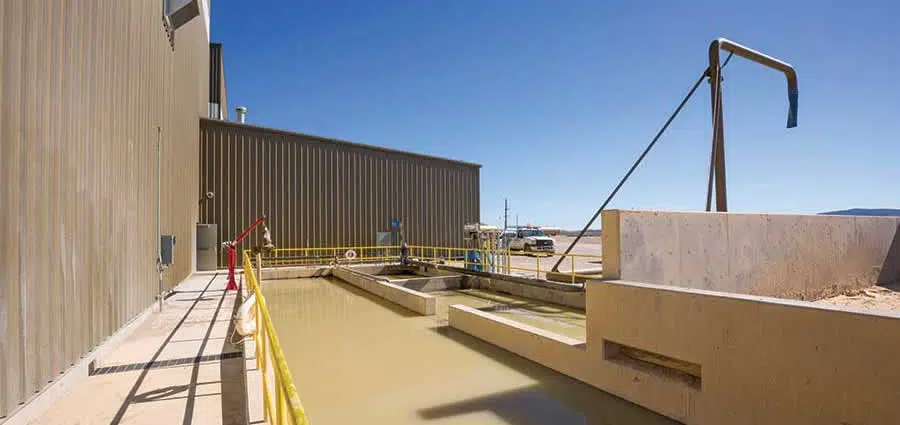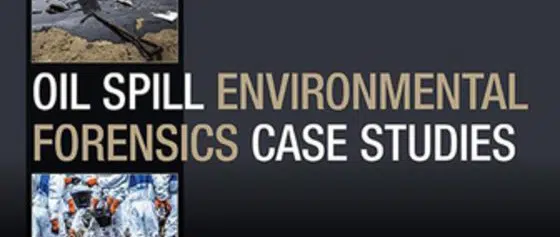Perspective. Vision. Solutions.
NewFields is an environmental, engineering, and construction management consulting firm. We provide access to a global network of recognized experts and professionals who work together to resolve our clients’ complex business needs.

NEWFIELDS & NEWMONT MINING CORP
NewFields is proud to provide on-going support to an award-winning mine in Nevada. Newmont Mining Corporation received an award for the 2017 Best Energy / Industrial Project for the Long Canyon Project from Engineering News Record (ENR) for the Southwest Region. Long Canyon is a new gold mine located in eastern Elko County, Nevada. NewFields has supported the civil design and permitting aspects of the project since early 2013 beginning with coordination with Newmont to determine the general site layout and assistance with the National Environmental Protection Act (NEPA) permitting process. From 2013 through early 2016, NewFields prepared the permitting documents and obtained approval for the new Heap Leach Facility (HLF), and designed the civil layout of the mine complex area, including some of the associated municipal utilities. In addition to the HLF and mine complex, NewFields also provided design and construction support for the mine support facilities, Waste Rock Storage Facility, surface water management infrastructure, haul and access roads, and septic system. NewFields worked in close conjunction with the leading construction manager, Big-D, and numerous other sub-contractors and takes pride in the great work performed by all parties. CLICK HERE to read the full article. CLICK HERE to find out more about our mining services.

OPTIMIZED APPROACH TO PFAS ANALYSIS
NewFields is determining an approach for the source attribution of per- and polyfluoroalkyl substances (PFAS) materials. This initiative is focused on developing tools to complement standard analytical techniques currently used to measure PFAS analytes for regulatory purposes to more fully characterize the chemical composition of historical and modern commercial PFAS products. This optimized approach to PFAS analysis will allow NewFields scientists to evaluate the source of PFAS residues encountered in the environment and develop diagnostic techniques that will allow for source allocation to be determined in site investigations involving multiple sources. To learn more about our forensic chemistry services CLICK HERE, or contact Mark Benotti (781) 681 5040 x110 (office) or [email protected].

NEWFIELDS IN PRINT
The latest compilation of hydrocarbon characterization, source identification, and interpretation methods hit the bookstores in the first week of 2018. Oil Spill Environmental Forensics Case Studies (Stout and Wang, Eds.) features major updates in 34 chapters on a wide range of subjects related to chemical testing techniques and diagnostic strategies that evolved out of applied casework in many scientific fields over the past decade. NewFields authors contributed substantially to this publication with the following chapters:
- “Critical review of an interlaboratory forensic dataset: effects on data interpretation in oil spill studies,” by Eric Litman, Stephen Emsbo-Mattingly, and Wendy Wong.
- “Unraveling the complexities of upland spilled fuels,” by Kerylynn Krahforst and Ted Healey.
- “Chemical fingerprinting assessment of the impact to river sediments following the Bakken crude oil train derailment and fire, Mount Carbon, WV,” by Scott Stout, Joseph Papineau, and Matthew Adkins.
- “Use of passive samplers to determine source of dissolved PAHs in the Ottawa River, Toledo, OH,” by Mark Benotti, Lisa Lefkovitz, L., and Mark Mills.
- “Red crabs as sentinel organisms in exposure of deep-sea benthos to Macondo Oil following the Deepwater Horizon Oil Spill,” Gregory Douglas, Bo Liu, Wendy Wong, Eric Litman, and Jeff Hardenstine.
- “Novel biological exposures following the Deepwater Horizon oil spill revealed by chemical fingerprinting,” by Scott Stout, Eric Litman, Greg Baker, and James Franks.
- “Forensic identification of historical and ongoing tar oil releases in nearshore environments,” by Stephen Emsbo-Mattingly and Eric Litman.
CLICK HERE to order from Amazon.


 Facebook
Facebook Instagram
Instagram LinkedIn
LinkedIn Twitter
Twitter
